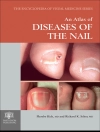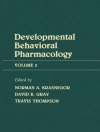Endoscopic spinal surgery has become popular due its procedure-related benefits. The biportal endoscopic surgery is a recent technique, which has gained popularity in Asia, Europe, and Latin America since it can be applied to treat many diseases of the whole spine as cervical, thoracic, lumbar and sacral.
Divided into thirty-four chapters, this first-ever book on unilateral biportal endoscopic spine surgery presents the technique history review and its current applications; the currently available technology and basic principles of this surgery: anesthesia, position, and operative room setup; endoscopic instruments, hydrostatic pressure, and intraoperative radiology; as well as anatomical considerations of basic approaches. It also details the techniques to resolve lumbar, cervical and thoracic spine diseases.
Written by the world’s most influential groups that perform the method, Unilateral Biportal Endoscopy of the Spine: An Atlas of Surgical Techniques will certainly be widely accepted by all surgeons interested to improve their daily practice in minimally invasive spine surgery.
Inhaltsverzeichnis
Part I. Generalities.- 1. The Unilateral Biportal Endoscopic Spine Surgery Concept: An Overview.- 2.Brief History Review of Unilateral Biportal Spinal Endoscopy.- 3.Unilateral Biportal Endoscopic Spinal Surgery Evidence-Based Outcome.- 4.Current Technology Available for Unilateral Biportal Endoscopic Spinal Surgery.- Part II. Basic Principles.- 5. Basic Principles of Unilateral Biportal Endoscopic Spinal Surgery: Operative Room Setup, Anesthesia, and Patient Positioning.- 6.Basic Principles of Unilateral Biportal Endoscopic Spinal Surgery: Technical Considerations Before Starting.- 7.Basic Principles of Unilateral Biportal Endoscopic Spinal Surgery: Anatomical Considerations of Elementary Approaches.- 8.Basic Principles of Unilateral Biportal Endoscopic Surgery: Intraoperative Radiation Exposure During UBE Procedures.- Part III. The Learning Process .- 9.The Learning Process of the Unilateral Biportal Endoscopic Spine Surgery: What does the Surgeon Need to Perform the Technique?.- 10.How To Go Further With My Clinical Practice On Unilateral Biportal Endoscopy.- 11.From Conventional to Biportal Endoscopic Surgery: The Transition Observed by an Expert Surgeon.- 12.Put It Into Practice: The Unilateral Biportal Endoscopic Surgery.- Part IV – Lumbar.- 13.Unilateral Biportal Endoscopy for Non-Migrated Lumbar Disc Herniation.- 14.Unilateral Biportal Endoscopy for Complex Lumbar Disc Herniations.- 15.Unilateral Biportal Endoscopy for Rostrally and Caudally Migrated Lumbar Disc Herniations.- 16.Unilateral Laminotomy for Bilateral Decompression (ULBD) through Biportal Endoscopy for Lumbar Spinal Stenosis.- 17.The Unilateral Biportal Endoscopic Paraspinal Approach for Lumbar Foraminal Pathology.- 18.Challenging Cases Treated with UBE: The Far-Out Syndrome.- 19.The Biportal Endoscopic Contralateral Approach For Juxtafacet Cystic Lesions of the Lumbar Spine.- 20.The Contralateral Sublaminar Approach to Decompress the Lateral Recess and Foramen of the Lumbar Spine at the Same Stage.- 21.Incidental Dural Tears in Unilateral Biportal Endoscopy.- 22.Challenging Cases Treated With UBE: Lumbar Revision Surgery.- 23.Unilateral Biportal Endoscopic Transforaminal Lumbar Interbody Fusion – Technique, Variants, and Navigation.- 24.Combination of Uniportal and Biportal Endoscopic Approaches for Tandem Spinal Stenosis.- Part V. Cervical.- 25.Unilateral Biportal Endoscopic Posterior Cervical Foraminotomy and Discectomy.- 26.Unilateral Biportal Endoscopic Posterior Inclinatory Cervical Foraminotomy.- 27.Biportal Endoscopic Posterior Decompression for Degenerative Cervical Myelopathy.- Part VI. Special Considerations .- 28. Biportal Endoscopic Posterior Decompression of Thoracic Spinal Stenosis due to Ossification of Ligamentum Flavum.- 29.Biportal Endoscopic Lumbar Facet Joint Denervation for Symptomatic Facet Joint Syndrome.- 30.The Role of Unilateral Biportal Endoscopy in Thoracolumbar Burst Fractures.- 31.Complications Associated with Unilateral Biportal Endoscopic Spine Surgery.- 32.Perioperative Care in Unilateral Biportal Endoscopic Spine Surgery.- 33.How to Establish the Unilateral Biportal Endoscopic Surgery in the Surgeons’ Daily Practice.- 34.Beyond the Horizon: The Future of Unilateral Biportal Endoscopic Spine Surgery.
Über den Autor
Javier Quillo-Olvera, MD, currently works at The Brain and Spine Care, Spine Center in Queretaro City, Mexico, a highly specialized medical group focused on treating the broad spectrum of spinal diseases employing state-of-the-art minimally invasive surgical techniques including all types of spinal endoscopy. He completed his Clinical Fellowship in Minimally Invasive Spine Surgery and Endoscopic Spine Surgery at Seoul St. Mary’s Hospital, The Catholic University of Korea, Neurosurgery Department, and The Leon Wiltse Memorial Hospital in Suwon City, South Korea. Dr. Javier Quillo-Olvera is a Mexican pioneer in spinal endoscopy, particularly in unilateral biportal endoscopy or UBE techniques and is involved in many academic and important scientific activities on spinal endoscopy as a professor, trainer, faculty, and invited speaker. He has published several scientific articles and book chapters about spinal endoscopy in the most important journals and influential books abroad.
Diego Quillo-Olvera, MD, currently works as an associate spinal surgeon in The Brain and Spine Care Group in Queretaro City, Mexico. He has participated in several national and international meetings about spinal endoscopy and is co-author of several scientific articles about biportal endoscopic surgery. Dr. Diego learned unilateral biportal endoscopic surgery directly from Dr. Sang Kyu Son, the most important surgeon in biportal endoscopic surgery in the world.
Javier Quillo-Reséndiz, MD, has been a neurological surgeon pioneer in Queretaro, Mexico. He currently works as a Senior Attending in the Spine Surgery clinic of The Brain and Spine Care group, in the most important Hospitals of Querétaro.
Dr. Quillo-Reséndiz is graduated of the Master of Spine Surgery sponsored by the AOSpine, a highly recognized society in spine surgery worldwide; and a graduate of the international fellowship at the Park Won Wook Hospital in South Korea, where he learned advanced techniques of Biportal Endoscopic Surgery of the Spine. He has recently participated with Drs. Quillo-Olvera in developing minimally invasive endoscopic techniques to treat multiple neurological spinal diseases. He is one of the doctors who has introduced biportal endoscopic methods in Mexico, and the first Neurosurgeon in the Institute of Social Security and Services for Workers (ISSSTE) of the state of Queretaro, where he left a legacy of outstanding work and scientific performance.
Michael Mayer, MD, Ph D is a Board certified German Orthopaedic – as well as Neurosurgeon specialized in Spinal Surgery. He graduated from Medical School at Johannes-Gutenberg- University in Mainz/Germany in 1981. He was fully trained and board certified in Neurosurgery as well as in Orthopaedic Surgery at the Free University in Berlin (1983 – 1992). He started his specialization in Spine Surgery in 1987 and became Deputy Chairman of the Department of Orthopaedic Surgery of the Free University of Berlin in 1992. He is currently an ad Honorum Professor of Neurosurgery at the Paracelsus Medical School in Salzburg/Austria. He has been President of the European Spine Society as well as of the German Spine Society (2006). He has published more than 150 papers in peer-reviewed scientific journals and has edited / co-edited 7 books. He is member of the editorial/advisory boards of several international scientific journals












